Sail Names: Explained for Beginners (With 15 Examples)
In sailing, everything has it's own peculiar name, and the sail names are no exception. To clear things up, I'll explain the most common sail names in this article.
Sailing is exciting. Getting swamped with all the sailing terms less so. Especially since some of these terms date back to prehistoric times and are kept around for the sole purpose of elitism. So to help you navigate this world for which you often need a dictionary, here is one. These are sail names explained for beginners.
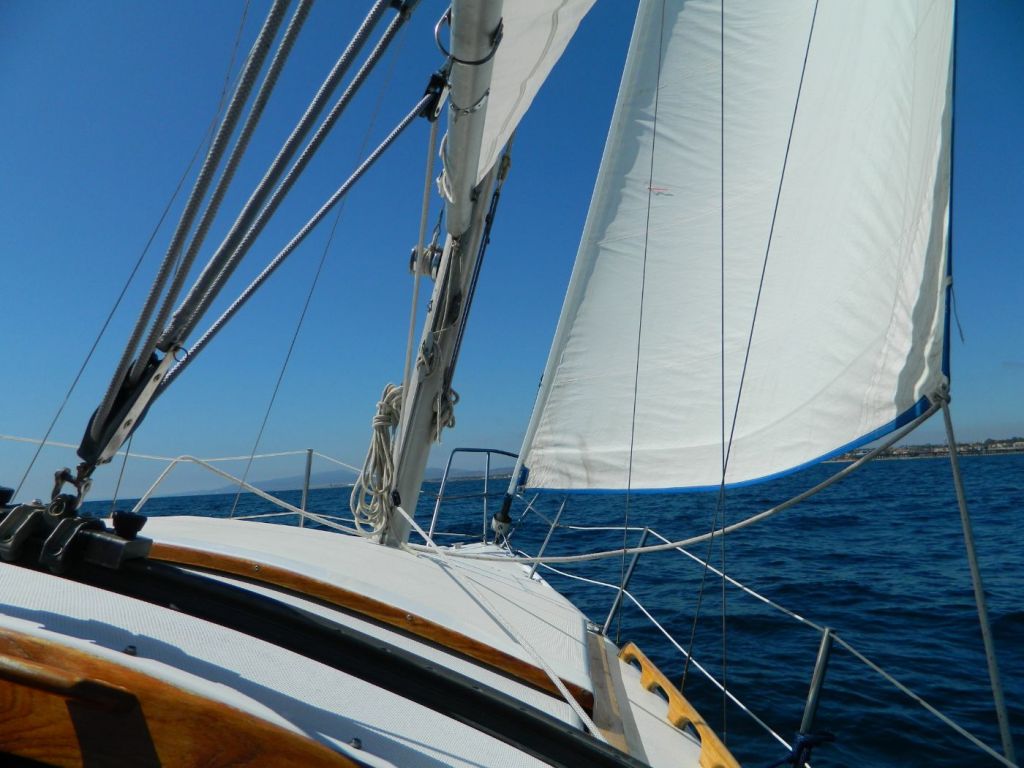
Here are the 15 most common sails:
What a bunch of odd names! Let's see what these mean.
We are starting with the more common types and will go all the way into names you can forget without feeling too guilty about it.
These days, only five or six types are used in the majority of sailboats, with the rest being nothing more than a nice-to-know party trick.
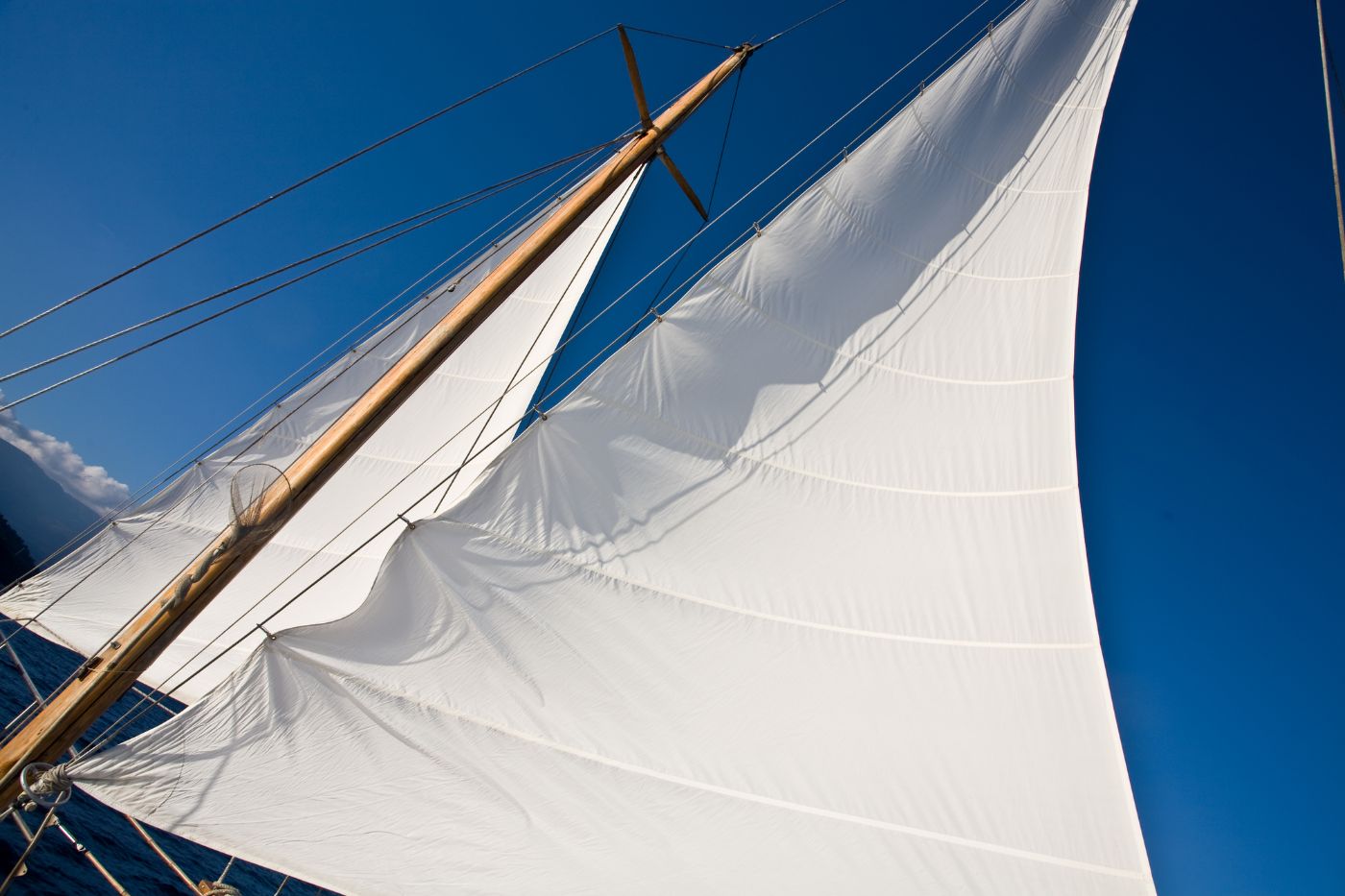
Mainsail
This one is easy. On the most common sailboat type, which has one mast, the mainsail is the one that goes from the mast to the back, attached to the boom on the bottom.
It is usually the largest one. When furled in, they are either stored in the mast, inside of the boom, or they sit right on top of the boom.
Their biggest advantage, and the reason why they are the most prevalent type all-around, is that, thanks to their design, they allow you to go anywhere, regardless of where the wind is coming from. Except for the ninety or so degree angle into the wind.
Just to make this complete, on older, classical ships with square sails and several masts (the ones you see in Pirates Of The Caribbean), mainsails are the bottom back ones. Nothing complicated here. Let's move on.
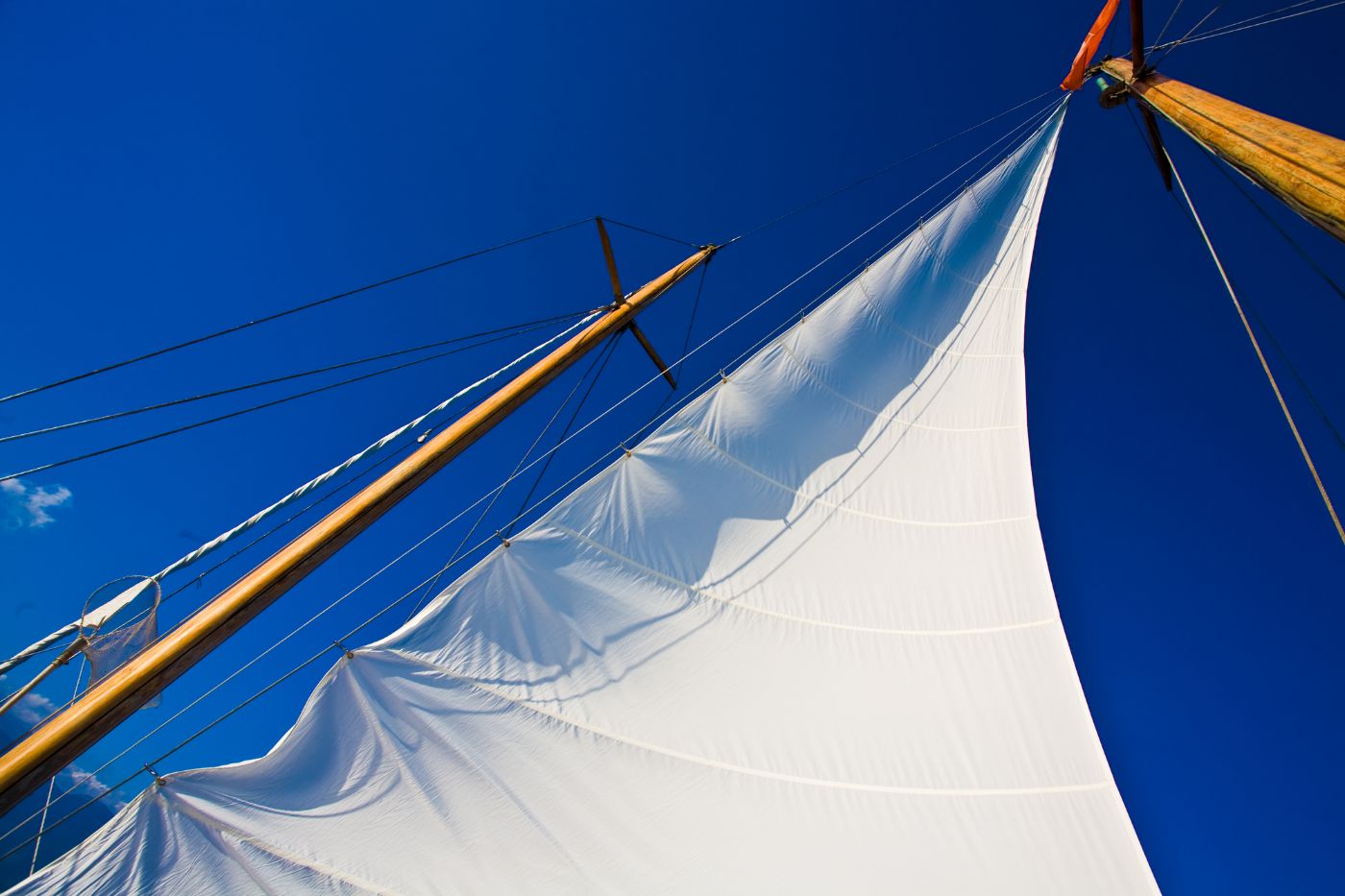
Foresail
Again, you will see this one around a lot. On the most common sailboats, the term foresail refers to the front sail, which is attached to the boat's bow and mast.
It is usually rolled in the roller furling or attached to the forestay via little snaps called 'hank-ons.'
If you stumble upon the term 'headsail' or simply 'front sail,' know it is just a different name for the same thing. Oh, and on the aforementioned pirate kind of ships, the foresail would be the bottom front one, rectangle-shaped.
Foresails tend to be smaller than the mainsail, but the size isn't necessarily a disadvantage - if you find yourself too overpowered by the wind and you have already trimmed your mainsail, the foresail's smaller surface area can come in handy since the wind won't impact it as much.
You can even sail with just the foresail up. And if you aren't using hank-ons, but a roller furling, trimming it is quite effortless.
Foresails come in various shapes and sizes according to what type of a foresail it is - let's see what these are called.
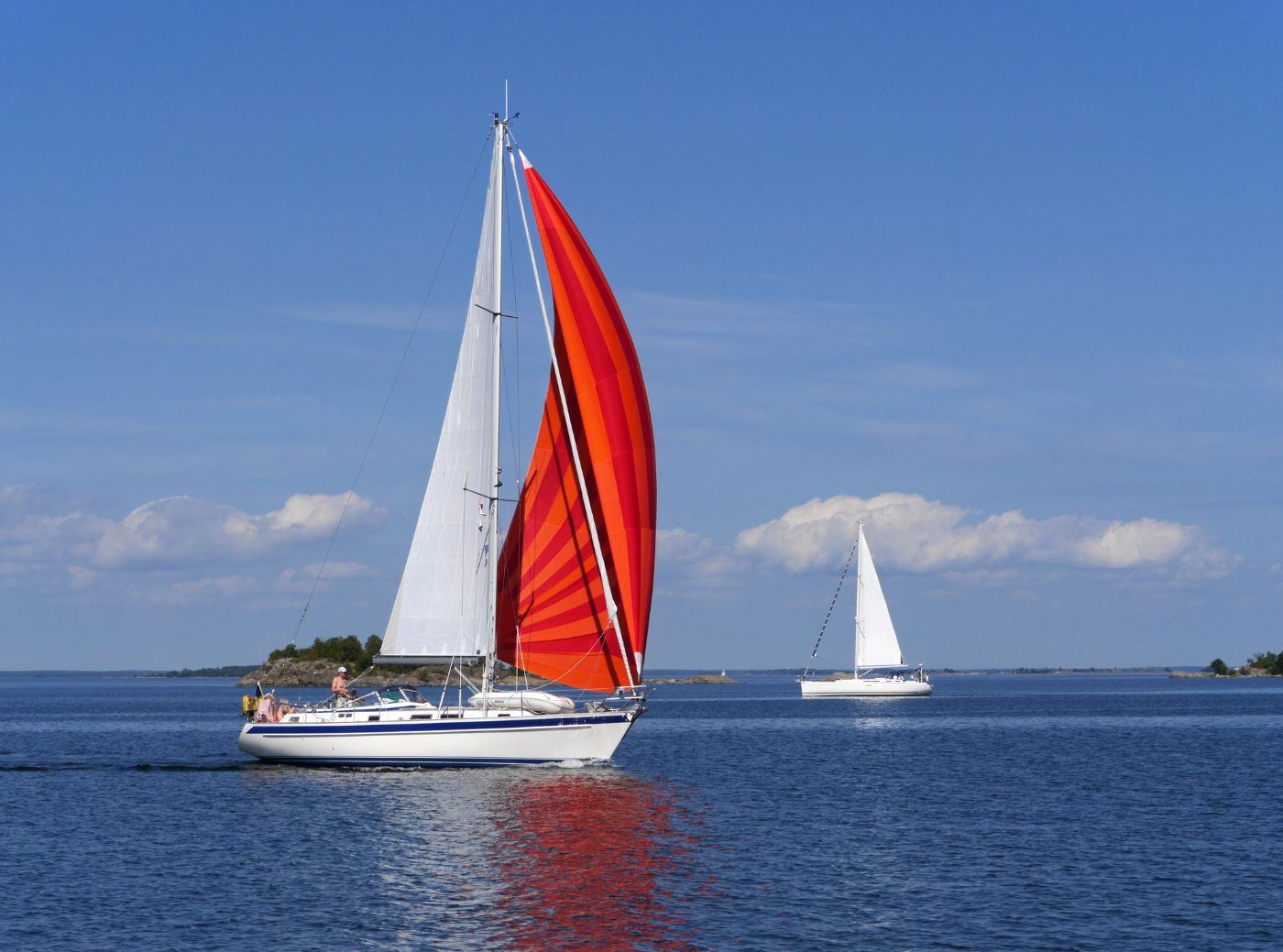
Genoa
This is a foresail that extends beyond the mast. Meaning its bottom side starts all the way at the boat's bow and ends behind the mast. This gives it a larger sail area, resulting in more speed, that's why these are popular with racers.
But tacking with a genoa can be a bit annoying since you have to drag it across the mast. And it tends to get stuck in the most inconvenient of moments. Having to climb to the mast right as the boat starts to heel from one side to the other and the foresail is flapping around like hell isn't fun, I could tell you stories.
Now, how much the genoa extends behind the mast differs, from a common 110% type (meaning circa 10% of the genoa is behind the mast), which you would find on many cruisers, all the way to the 180% type. The latter is quite uncommon, though, because around 150%, the genoa starts to be in the mainsail's wind shadow.
An alternative name for a genoa is an 'overlapping jib', so if you stumble upon that word, know it refers to the same thing.
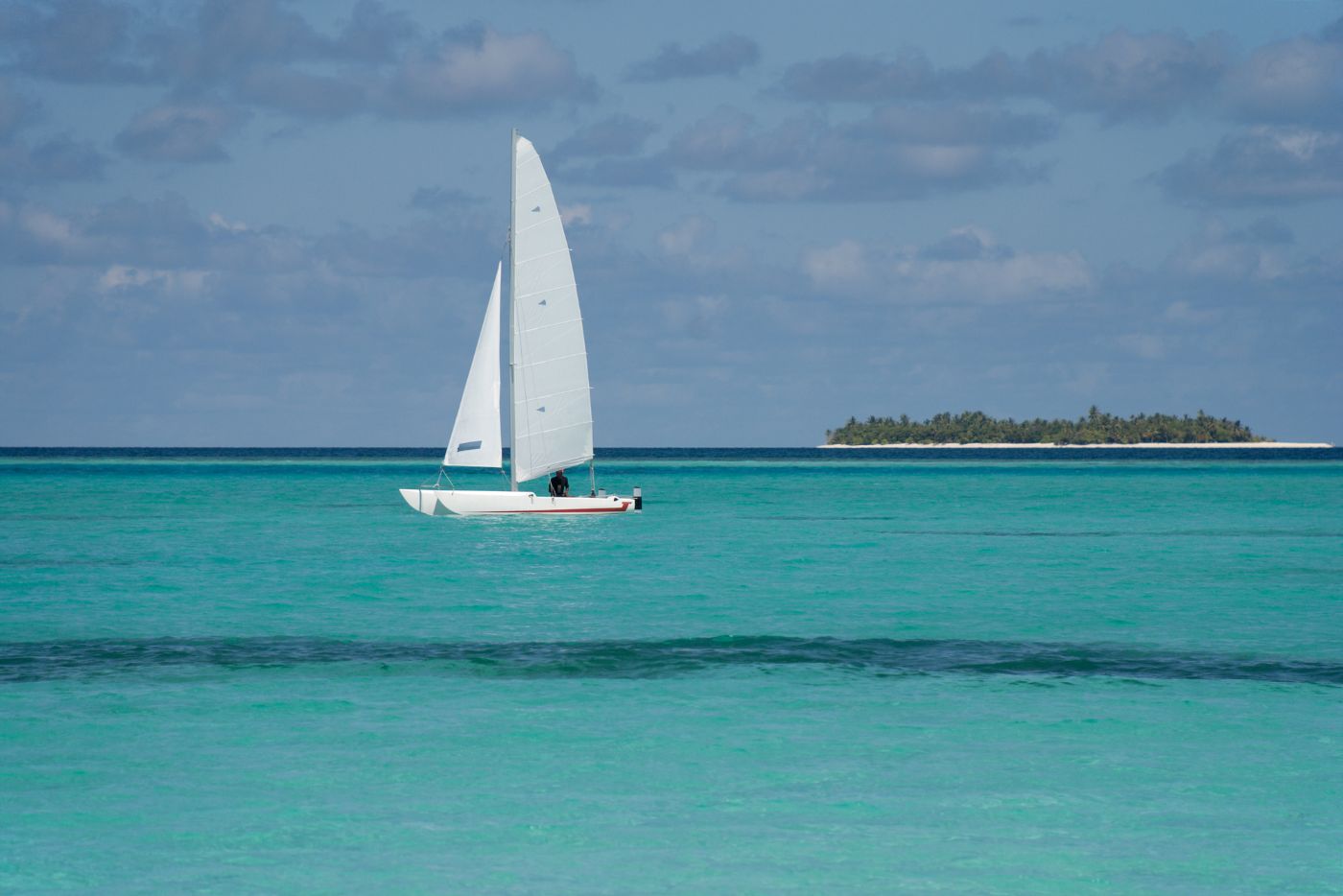
Jib
Imagine the jib as a genoa, but smaller, meaning it doesn't overlap the mast as genoa does. You will, of course, get less performance out of this setup, but the handling is easier, and since when tacking, the sail doesn't touch the mast, you can have a self-tacking system, a great thing for short-handed trips.
Speaking about performance, interestingly enough, it doesn't add as much in terms of propulsion as you would expect, but rather helps the airflow around the mainsail, helping it to function more effectively.
They are quite prevalent on modern holiday cruisers that prefer convenience and ease of use over the few knots of speed you would get from a large foresail.
You might come across the name 'windseeker', which is basically a very tall and very narrow jib, made from a light fabric - very useable in lighter winds since it can help you pick up speed even if the breeze isn't as strong.
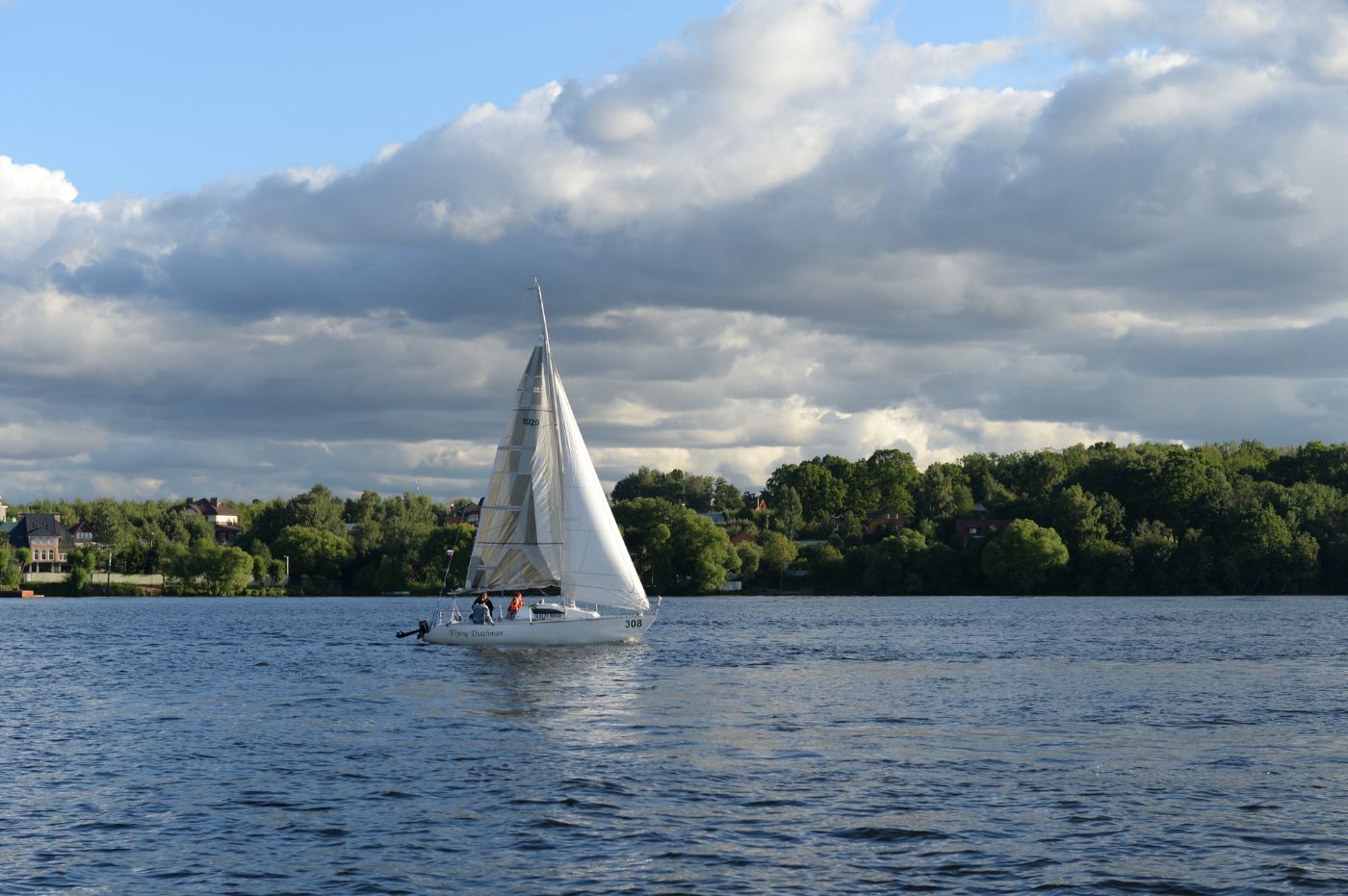
Staysail
This one's a bit tricky - the term staysail refers to a bunch of different sails, usually such that complement the already existing system. This could, for instance, be a forestaysail, a smaller jib positioned closer to the mast, not as tall as the foresail.
Having two sails in the front like that gets you more speed and having one closer to the mast helps to maneuver it in heavy weather since you don't have to go as far.
That is convenient, especially in rougher seas, where the very front of the deck gets hit by waves often, and so having to go all the way there to tweak a sail can present challenges.
Also, just as was the case with the jib, staysails are sometimes used to help the airflow around the mainsail, rather than generate speed on their own.

Spinnaker
Spinnakers are really pretty. They are humongous, parachute looking sheets used mostly for when the wind blows from generally the back. Their large area allows them to pick up a lot of wind, and so can add a lot to your speed, even in light winds.
There are symmetric spinnakers, that are, well, symmetrical in shape, used for the aforementioned back winds, and then there are asymmetrical ones, used more like a genoa, generating lift, for different wind angles.
And by the way, remember that rule saying you can't capsize a boat with sails only? Because the steeper the angle, the less the wind power and the boat will then correct itself?
Well, with spinnakers, forget that. If not manipulated with caution, they can have you go down quite easily. Use them with lighter winds.
Don't know how to use a spinnaker?
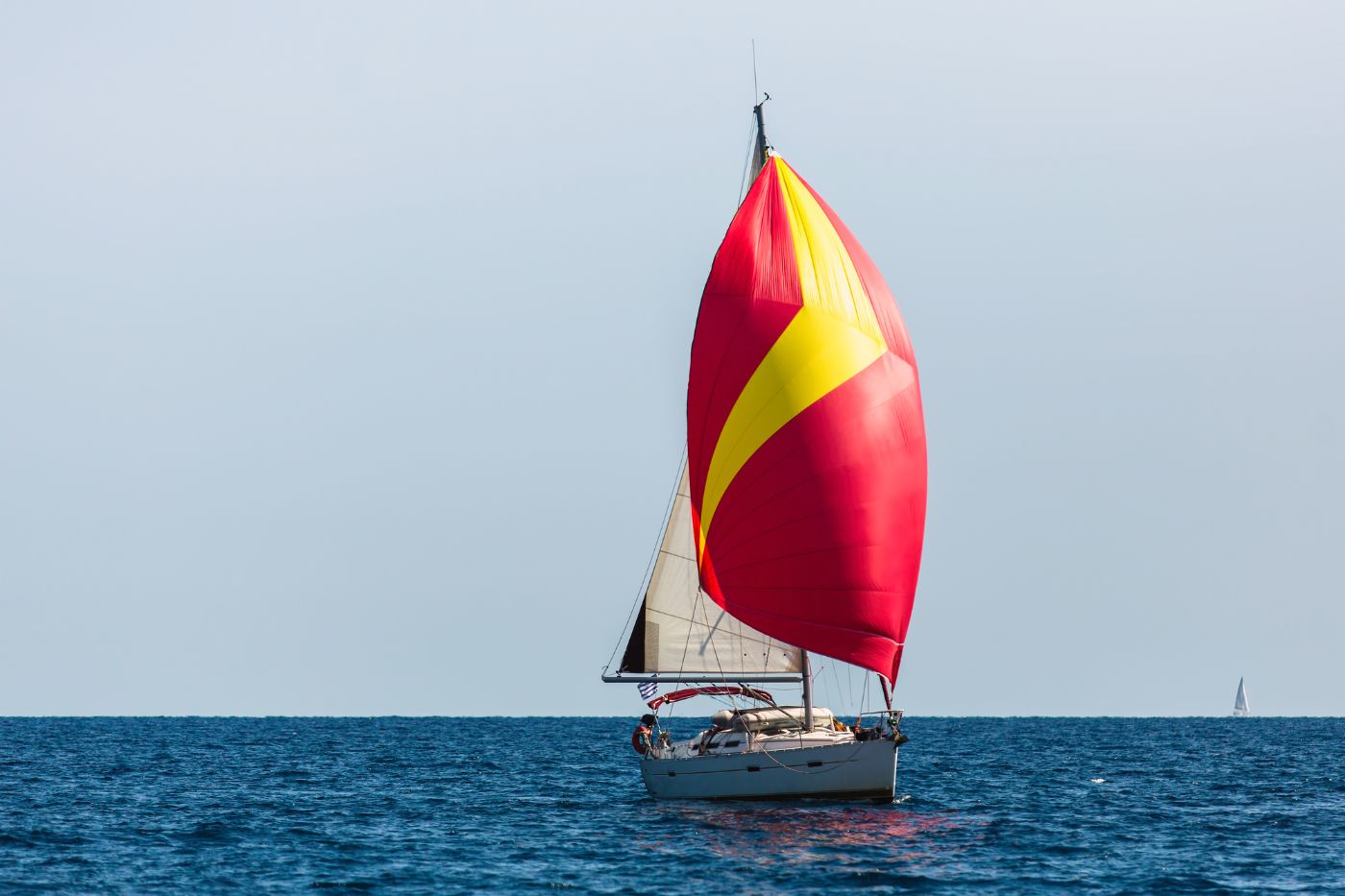
Gennaker
You might also come across its more badass name 'code zero', which is a sort of a mix between genoa and a spinnaker, used for close reaching. It's a relatively new invention, thought into existence in the 1990s.
Its asymmetric geometry makes it more immune to collapsing than a classical spinnaker, of course, for the price of less volume. You will find this one mostly on racers. For a cruiser, this would generally be an overkill.
Read more on the exact differences between the Gennaker and the Spinnaker here.
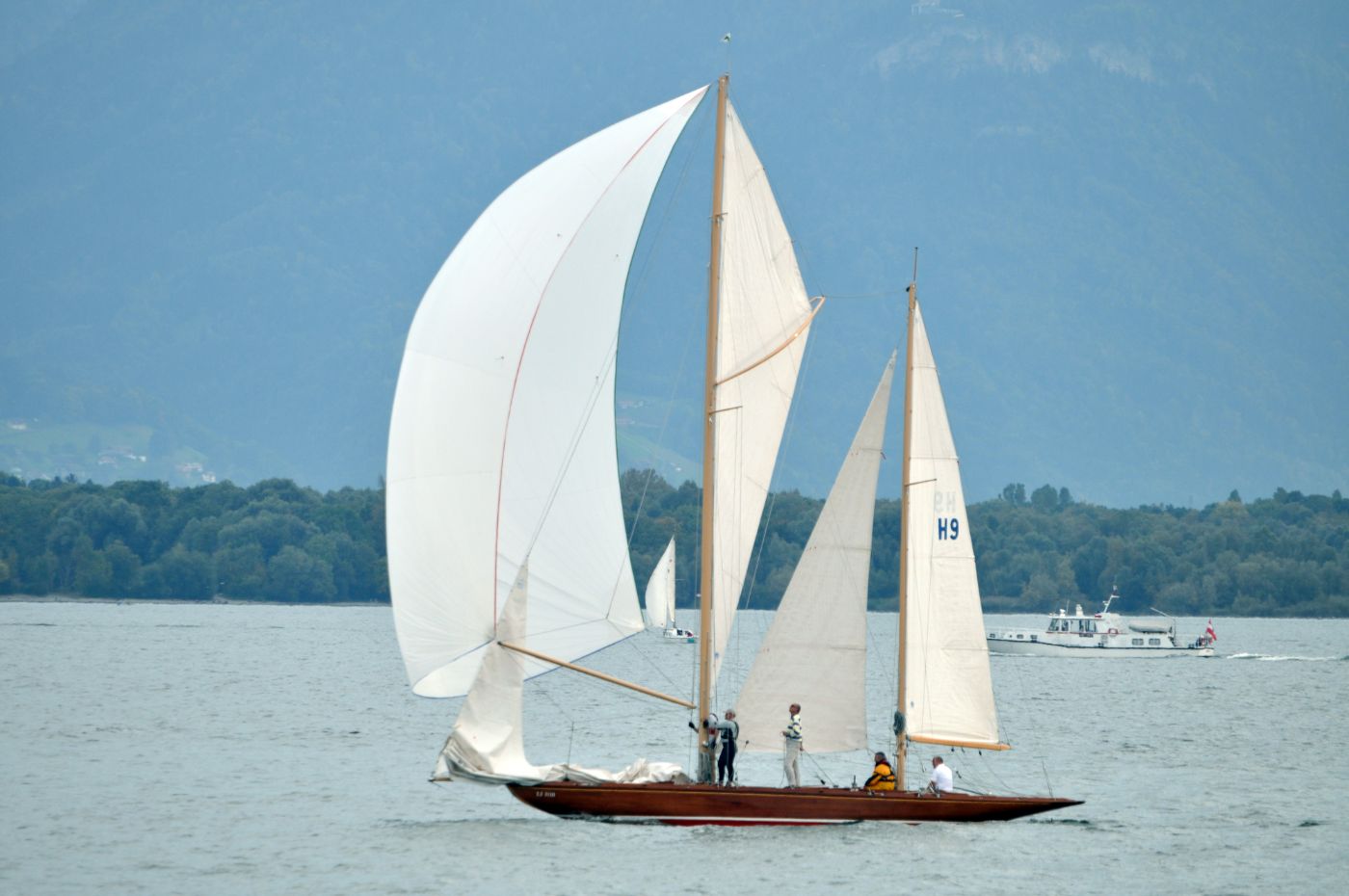
Mizzensail
These aren't as common. The term doesn't refer to a specific shape or placement of a sail, but rather generally to smaller sails that are found at the boat's stern, behind the mainsail. So you won't find it on sloops (the most classical sailboat type), but you will on ketches (two-masted sailboats).
The reasons for its existence are multifold.
Firstly, it allows for a smaller headsail while keeping the overall sail area. The smaller headsail is easier to operate, so this is a matter of convenience.
Secondly, a sail in this position can serve as a sort of wind rudder, helping the boat keep its direction. Some people even keep them up when anchored, to make sure the boat keeps pointing in the same direction.
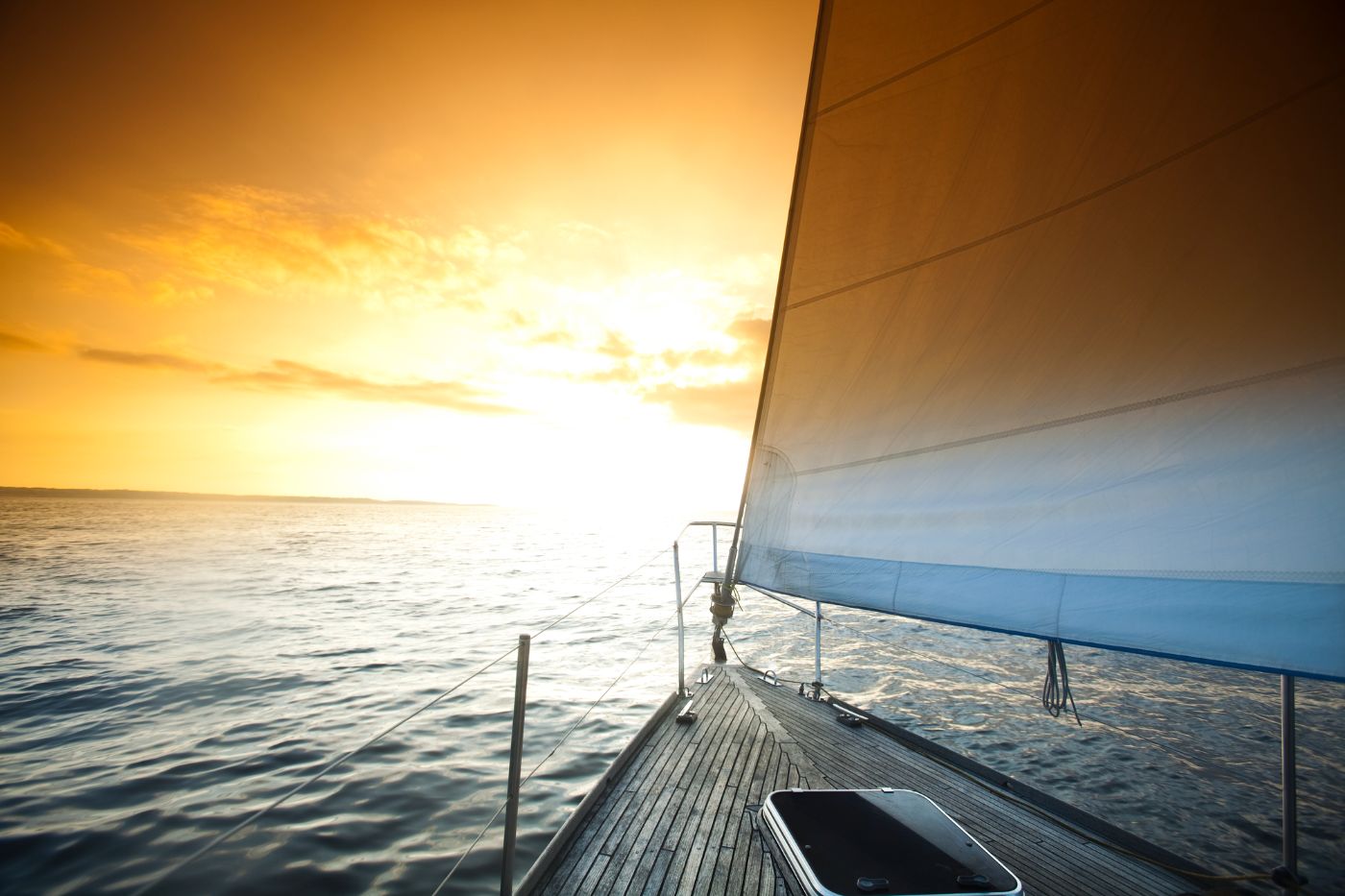
Lugsail
This is a weird one. Lugsails are sails that hang from a sort of a boom, called a 'yard'. Smart people thought of these as an upgrade from the classical traditional square sails - lugsails are easier to angle and thus perform better windward.
You remember those small fishing boats with a mast, boom up top, making it look like a cross and the sail being attached to it? That's the one I mean. These sails had their prime time around the eighteenth century (give or take one) and, fun fact, given their good performance, were popular among smugglers.
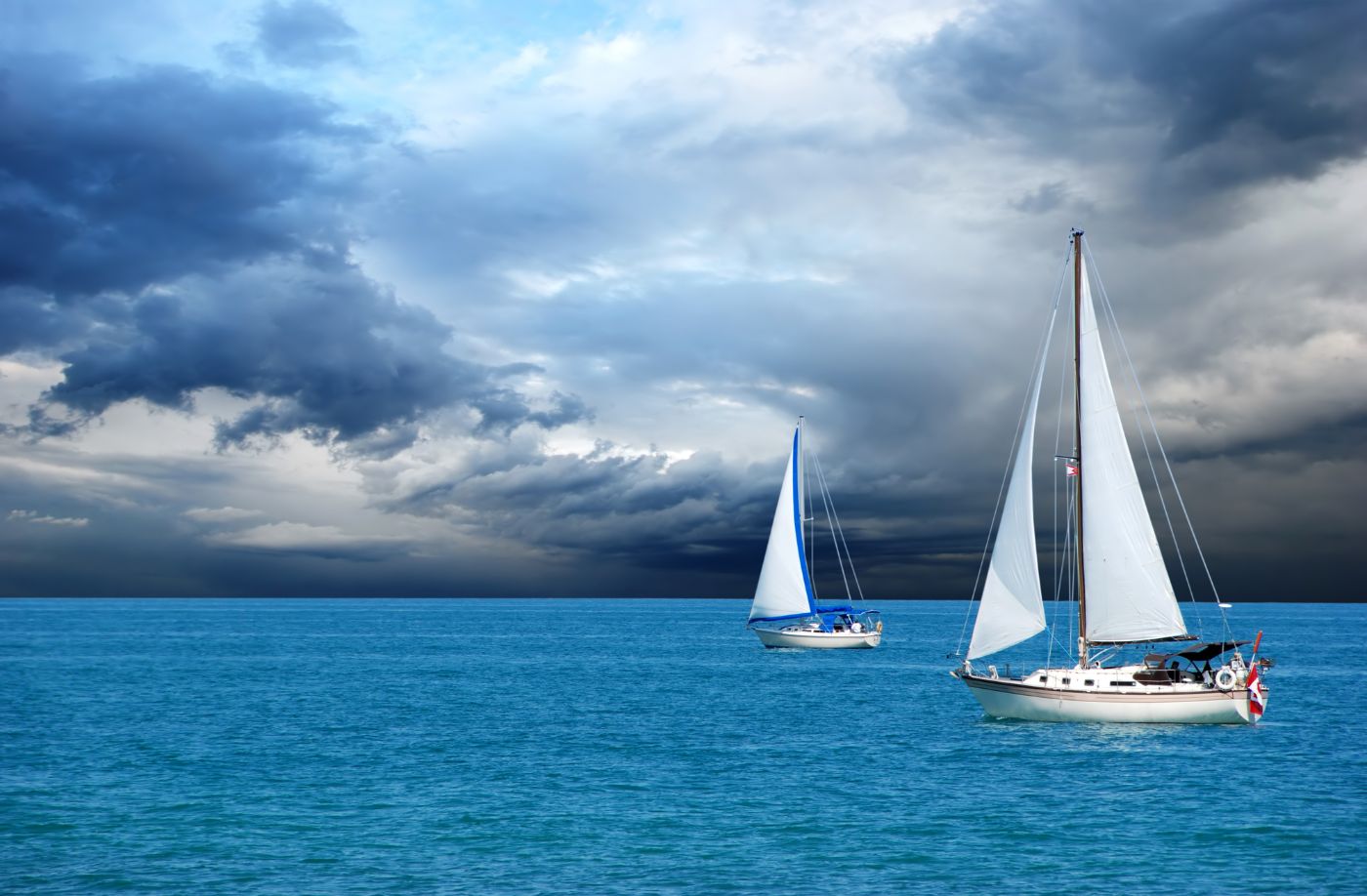
Stormsail
As the name suggests, these are used for storms. There is a storm jib (storm version of the front sail) and trysail (storm version of the mainsail). In essence, they look quite similar to your normal sails but are smaller. Way smaller. When in a storm, you want to keep the sail area quite tiny to cope with the strong winds.
Now, why not just reef your normal sails and keep on going, you might say? Well, you could. Up to some 30 knots, this would work. Not very well - there will be a lot of draft in the sail, and you will heel a lot - but it does the trick.
However, above 30 knots or so, you are risking damaging your sheets. Classical sails are made out of rather light fabrics that aren't likely to withstand a proper blow, unlike the tough storm sails.
They are also brightly colored so that you can see them better and are positioned higher, to keep away from the sea.
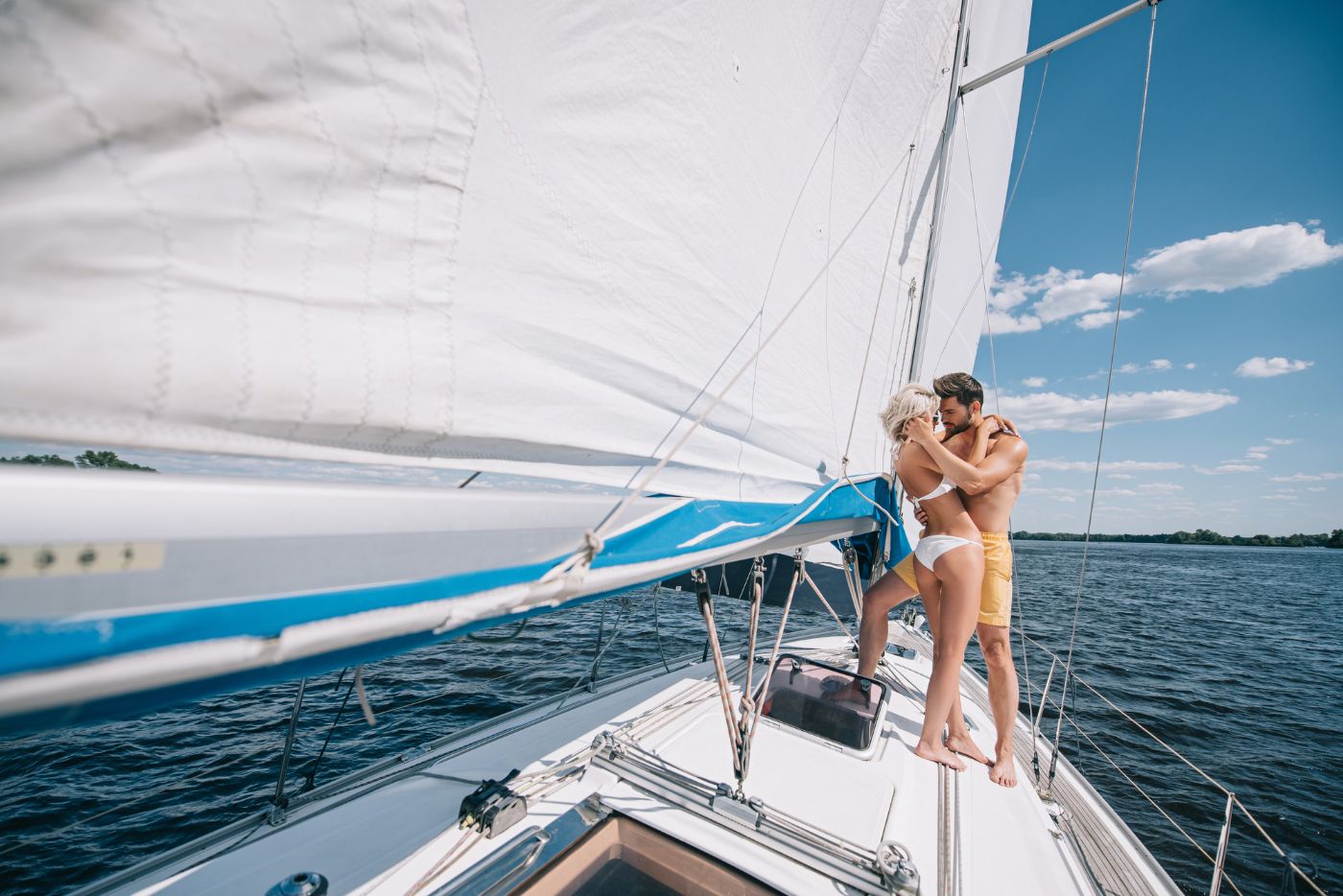
Spritsail
As old as the second century BC, spritsails are four-sided sheets that are supported by a diagonal boom of sorts, called sprit. Why this odd shape? For one, it is a great concept for cargo ships.
The sail's design doesn't obstruct whatever you have onboard, even if it is stacked quite high.
Spritsails are a feature of older, traditional boats, so you won't likely see them around these days much, except for some smaller dinghies, who may still use them.
They have been surpassed by more convenient designs. But if you do happen to stumble upon one, take it in, you are witnessing an important historical chapter.

Topsail
Back to the Pirates of the Caribbean ships - the four following sails are those found on the old, classical ships. They are the four (although sometimes you see even six) square sails set above each other, getting progressively smaller, the higher you go.
Let's start with a topsail. It is, unlike what you would expect from the name, not the one on the top. Rather it is the second or the third one from the deck.
These once used to be the most important sails on a ship. This is because they were quite high above the deck, so the wind up there was likely to be more constant than below (especially with larger waves) and also because of their large size.
In fact, sometimes boats would just have the topsails opened, sailing with them alone.

Royal
Royals were usually set above the topsails. They were smaller and made for rather light winds. Because such a setup required a tall mast, you would find these on big ships. Not much more to say here.
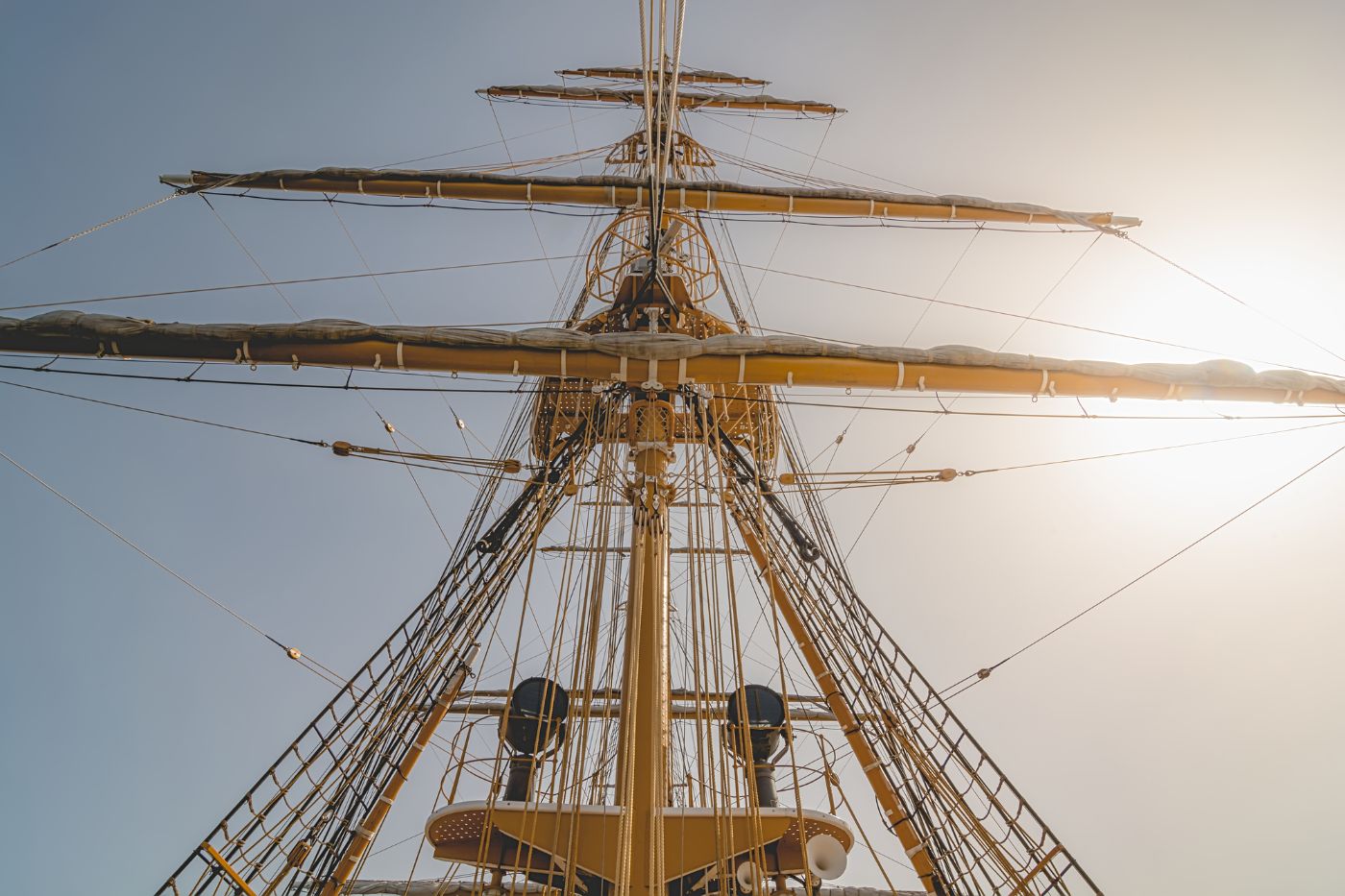
Skysail
Again, a misleading name. You would expect it to be on top, but it usually sat right above the royal. And just as royal, it would be used in lighter winds.
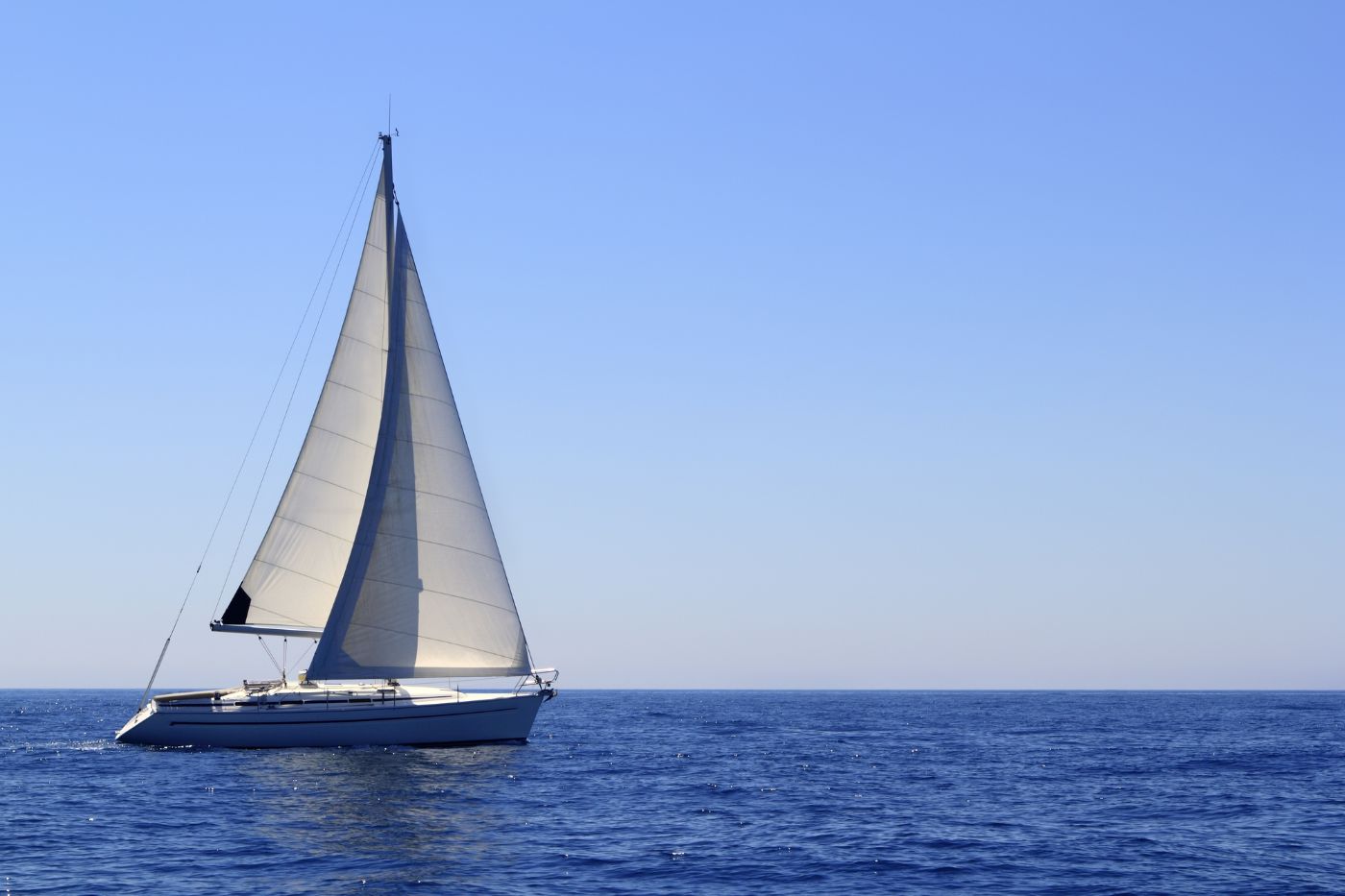
Moonraker
This is the top one. Moonraker was the smallest in size of the square sails and was sitting at the uppermost point of the mast. It was not that prevalent, since only boats designed for speed featured these. On rigs featuring triangular sails, it would be called a skyscraper.
Conclusion
So there you go. I hope I haven't confused your minds more than they were getting into this article. If you want me to make things easier for you, let me be honest - know that for most sailors, mainsail, genoa, and jib, with the occasional spinnaker, is all you need. I know, I know, many of you are now rolling their eyes - but let's be frank here - go into most marinas around the world, and these four are all you will see.
Fair winds!
Did you find the answer to your specific question?
👍 4 👎 5
Comments
Tom Schlosser
Well done, matey.
—Tom SCHLOSSER
“All I need is a tall ship and a star to sail her by.”
John Mansfield’s poem “ Sea Fever ”
Leave a comment